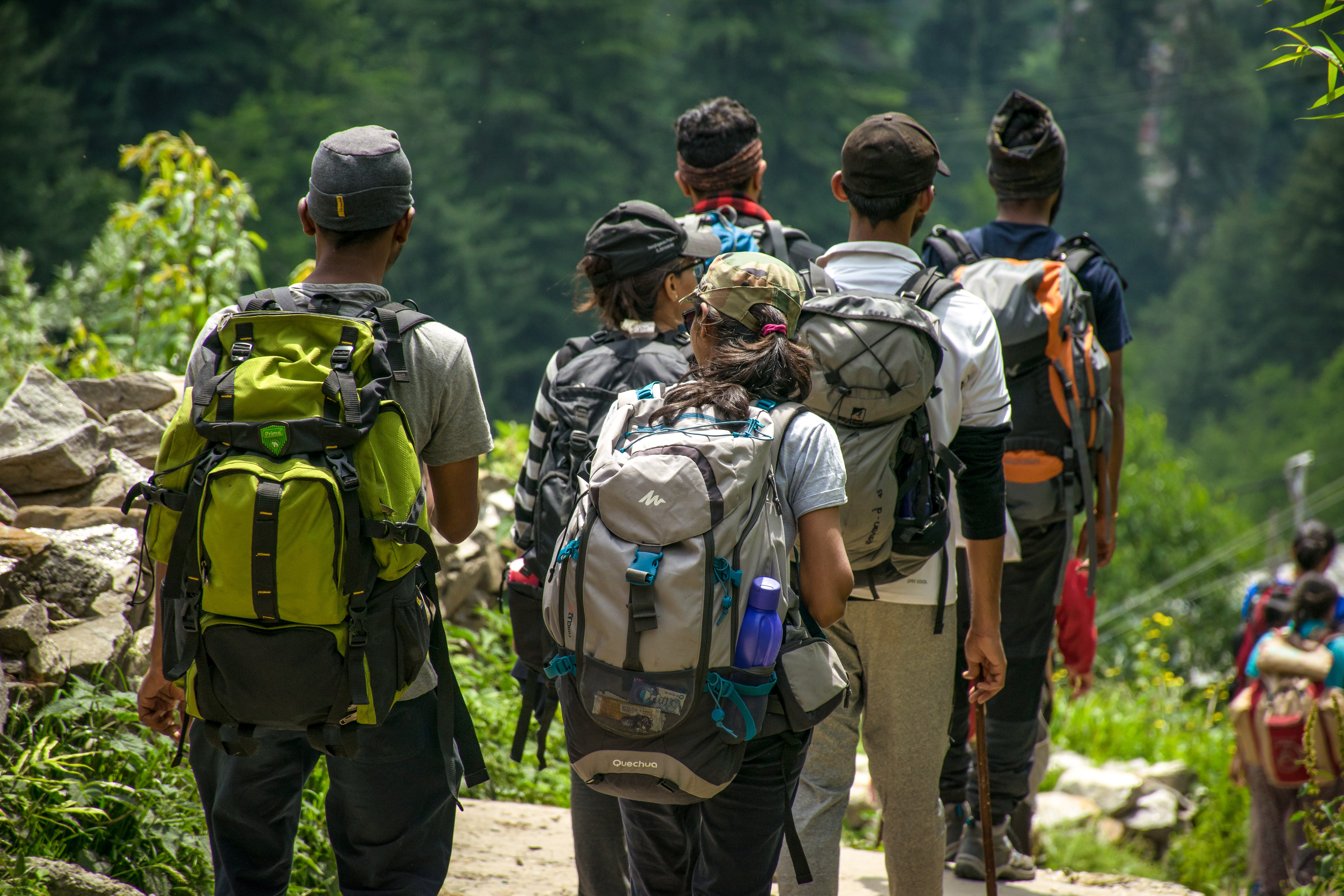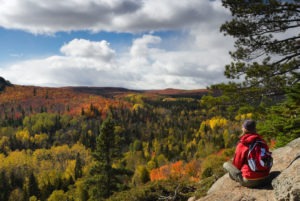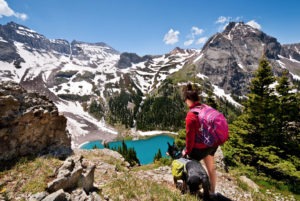10 Hiking Essentials
The Ten Essentials is nothing new to hikers, backpackers and climbers. It’s a list of survival items agreed upon by hiking organizations that’s been around since 1930. The Ten Essentials paired with a little common sense will ensure a safe and enjoyable experience in the wilderness. Remember, this list isn’t just for extreme backcountry goers. Day hikers, regardless of the intended length of the hike, should also stash these items in their pack.
1. Navigation
Most visitor centers offer a hiking map with marked trails that are an essential guide to locate your desired route. Hiking books and online maps also provide detailed routes, level of difficulty and length of the hike. In addition to such maps, a compass is a vital tool that never fails should you become disoriented in the wilderness. Many GPS systems have a built in compass, but an old-school compass is an indispensable tool that weighs next to nothing. It can’t hurt to toss one in your pack.
2. Sunglasses and Suncreen
Not all hikes ascend closer to the sun, but many do. As you ascend, the sun’s rays become shorter and stronger, while the air temp gets cooler. The trees also become smaller towards the top of the mountain, and many times, hikers venture beyond tree lines, being exposed completely to the sun. UV-protective sunglasses and sunscreen are crucial to protecting your skin and eyes. A lightweight, long-sleeved shirt and a hat are also good ideas for staying covered during hours of sun exposure.
3. Extra Food and Water
In addition to what you think you will consume, it’s very important to bring extra nourishing snacks and water. Even a short half-day hike can turn into an all-day event. Food like trail mix, protein bars, nut or seed butters with fruit and even smoothie mixes will jump-start your energy and supply you with more then enough nutrition to safely complete your hike. Extra water can be heavy to carry, but with today’s supportive hiking packs, there’s no need to sacrifice a few extra pounds! Systems for treating water in the wilderness are also available these days if you’re planning any sort of overnight trek in the backcountry. As a rule of thumb, you should never feel thirsty on a hike. Stay hydrated!
4. Extra Clothes
Your body temperature can rise and fall quite drastically depending on the incline, tree coverage, wind and humidity of the hike. A performance shirt that wicks moisture will keep you dry, a rain jacket takes up little space and will be your best friend should the weather turns sour, and a thin fleece is perfect for a breezy lunch at the summit.
5. Headlamp/Flashlight
Headlamps are nearly as common as hiking shoes these days. They’re hands free, lightweight, compact and have a long battery life. An extended stay at the summit can lead some hiking at dusk under lots of trees, so a light isn’t a bad idea to have on hand. Also, setting up camp after the sun sets and middle of the night “bathroom” breaks are also much more pleasant with illumination.
6. Repair Kit
Because not all trips go as planned, a repair kit that includes duct tape and a sewing kit, is a lightweight addition to your pack that could make or break your experience. Duct tape has a thousand uses and can be a temporary fix for almost anything. An old trick is to wrap duct tape around the base of your water bottle multiple times to cut down on excess gear. A sewing kit can repair a tear in your pack, tent or sleeping bag.
7. First-Aid Kit
Somewhat of a no-brainer, a first-aid kit can truly be an invaluable life saver out in the wilderness. Pre-assembled first kits should cover all your bases—adhesive bandages, antiseptic cream, sterile gauze pads (various sizes), medical tape, alcohol or iodine wipes, elastic bandages or wraps for sprains, latex gloves, pain killers and antihistamines. Whether you personalize your own kit or purchase a preassembled kit, never hit the trail without one.
8. Firestarter and Matches
Matches should either be waterproof or stored in a an completely sealed container. Invest in some good quality matches that won’t break upon striking, rather than the free ones from the bar. A lighter isn’t a bad idea, but always have matches as a backup. Firestarter sounds a little more high tech than it should be. Anything that will sustain a flame for more than a few seconds will work. Candles, dry tinder, priming paste and even dryer lint are sufficient. Be sure to store your firestarter in a waterproof pouch, like a freezer bag.
9. Knife
A multi tool knife with pliers and a knife blade, should always accompany your hike or camping trip. A knife has countless purposes including food prep, gear repair and other emergency needs. It’s also fun to chisel away at a branch to make an epic marshmallow roasting stick.
10. Emergency Shelter
For campers, this won’t be necessary since a tent will already be on the gear list. For day hikers, however, packing an emergency space sack, a small tarp or even a large plastic garbage bag could be crucial for survival should an unexpected night occur in the wilderness. For a day hike through a highly visited state park, an emergency shelter probably won’t be necessary. Bur for hikes on less-traveled trails lasting more than six hours, an emergency shelter should not be overlooked.
Now that you have the Ten Essentials dialed, it’s important to know how to use them properly. Before you venture out, play with your knife, study your topography map, research how to treat cuts and sprains and sample that trail mix. Above all, knowledge is the most important piece of gear.









[…] be sure you have a hiking backpack where you can store all of the essentials you need for your hike, such as a water bottle, sunscreen, bug repellent, extra clothing, food, a […]